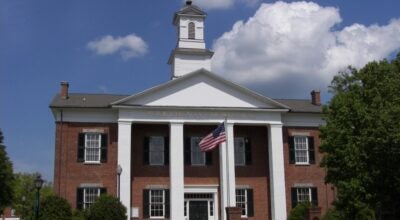Polk County mourns loss of accomplished public servant
Published 3:46 pm Thursday, February 19, 2009
He was a founding member of FENCE and the Polk County Community Foundation. Upon his retirement in 1997, the foundation&squo;s annual report recognized him for &uot;bringing and keeping the Foundation where it is now.&uot; To thank him for his contributions, an anonymous donor established the Paul Culberson Agricultural Development Fund &uot;to serve as a perpetual tribute to Paul Culberson for the innumerable services that he has given to the community over the years; and hopefully, for many years to come.&uot;
Below is a tribute to Paul Culberson written by his step-daughter, Adele Dusenbury.
Paul Culberson &ull; 1916-2009
If a person&squo;s life could define the value of community service, it would be the life of Paul Culberson. His accomplishments and awards could fill a book. Here&squo;s a brief tribute.
Born in 1916, he was the second of three children of a teacher and his wife who eked out a living in the community of Snow Camp, Chatham County, with farming as a side family enterprise.
Throughout his life, Paul remained deeply grateful to Berry College, in the state of Georgia, which had allowed him, a poor farm boy with a talent for hard work, to earn a degree in agriculture. This was crucial during the bleakest years of the Great Depression. He went on to earn a degree in animal industry at North Carolina State, 1941.
He was in the invasion on D Day, commanding an artillery battalion, but never talked about the war. &dquo;We did some terrible things,&dquo; he said. That was it. He had been raised a Quaker.
As Polk County&squo;s Agricultural Agent for three decades, Paul became so familiar with the territory that he could drive miles and miles into its farthest reaches and know not only every road but every &dquo;almost a road,&dquo; and know everybody who lived on them. Everybody knew Paul.
He dispensed advice and the latest in technical know-how to farmers, leading them from the cotton production in the 1940&squo;s to dairy farming, and an emphasis on a variety of crops, including beans, grapes, corn and cauliflower. He helped them maximize production, maximize profits, and plan for the future. He nurtured the county&squo;s 4-H clubs, encouraging its future farmers. &bsp;
Probably very few of the people served by this modest &dquo;farm agent&dquo; knew he had studied plant genetics in England. But he had, after the war.
Asked in recent years what the current leading crop was in Polk County, Paul jokingly, a little wistfully, answered, &dquo;real estate.&dquo;
After retirement, perhaps anticipating the pressures of real estate development, Paul was one of five visionaries who created the philanthropic Polk County Community Foundation (PCCF) whose goal it was to preserve the county&squo;s natural resources while encouraging culture and growth that would enhance life here.
Paul was Executive Director for its first years.
PCCF began its grants program small ‐ a new carpet for a school classroom. Today grants are in the thousands of dollars, over a wide area. The scholarship program, Paul&squo;s favorite, also began with just one and has now grown to hundreds of scholarships, over a wide area.
Long time residents will remember Paul&squo;s first wife Gladys, head of Polk County&squo;s Red Cross for many years. After she died in the late 1970&squo;s, he sold household items, and with those funds started a scholarship within the new Polk County Foundation for students pursuing careers in agriculture.
On July 4, 1981, Paul married Jane Dusenbury, whose husband had died. The Culbersons and Dusenburys had been close friends for 25 years. The house Jane and Paul built on Howard Gap Road, with the help of Fred Placak, was recognized in 1982 as &dquo;a fine example of energy efficient solar design&dquo; by the Governor&squo;s Showcase of Solar Homes.
Paul was one of the founders of FENCE. This came about because he knew the Mahler family, from when he first came to Polk County and began advising them on their farm. The Mahlers had fine land holdings.
One day, while Jane waited in the car, Paul visited Mrs. Ernst Mahler to talk about how a gift of land could become a project of great benefit to Polk County.
The family&squo;s gift became FENCE ‐ &dquo;Foothills Equestrian and Nature Center.&dquo; Today all sorts of nature and horse activities bloom here ‐ including the annual Block House Steeplechase.
Back in the &dquo;early days,&dquo; Paul had a talk show on the Spartanburg station WSPA geared to farmers and gardeners. He concluded each show, &dquo;Thanks for listening.&dquo;
To the tribute above, those of us who knew and loved Paul and appreciate his great contributions, say, &dquo;Thanks for listening.&dquo;
‐ submitted by Adele
Dusenbury





